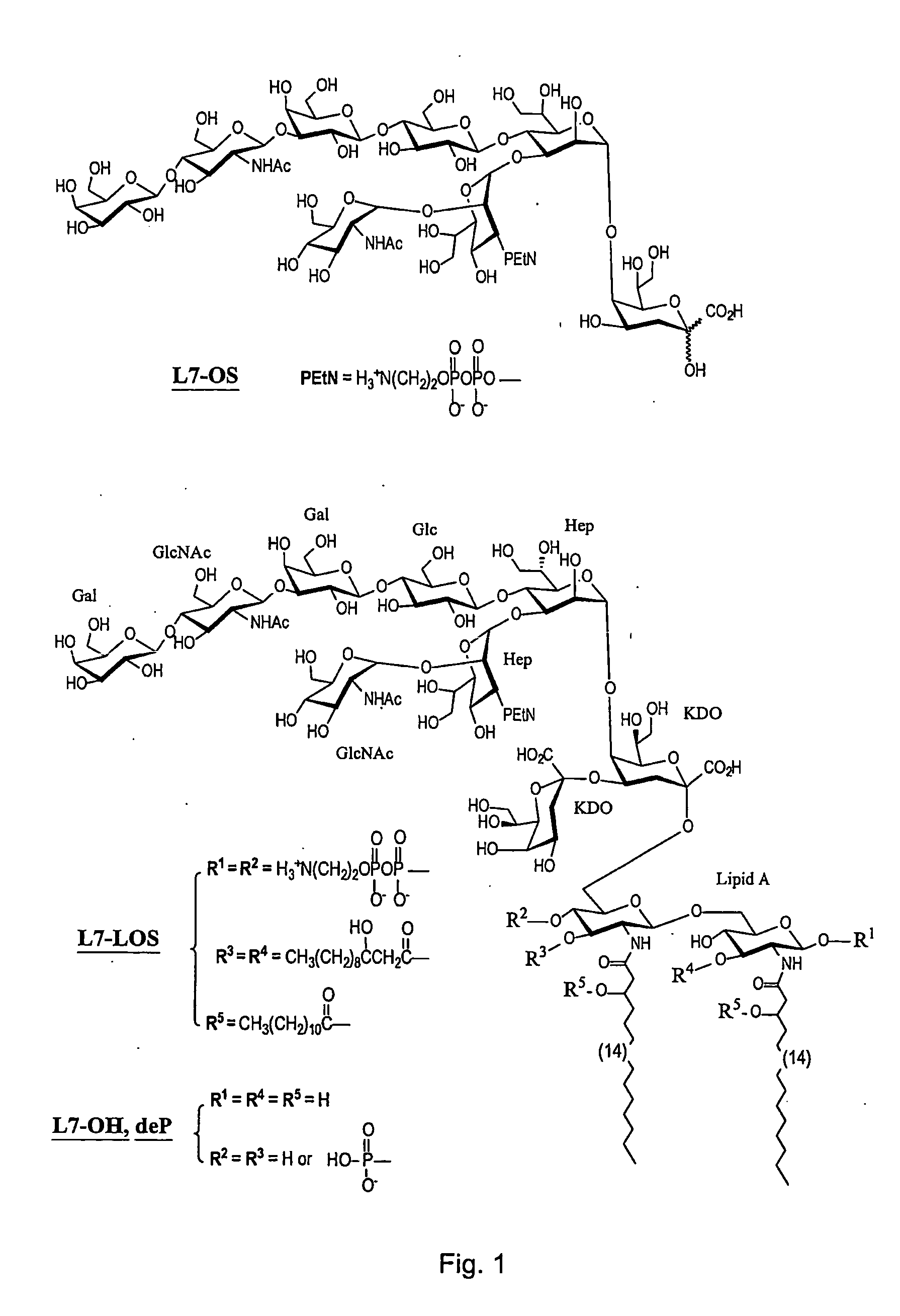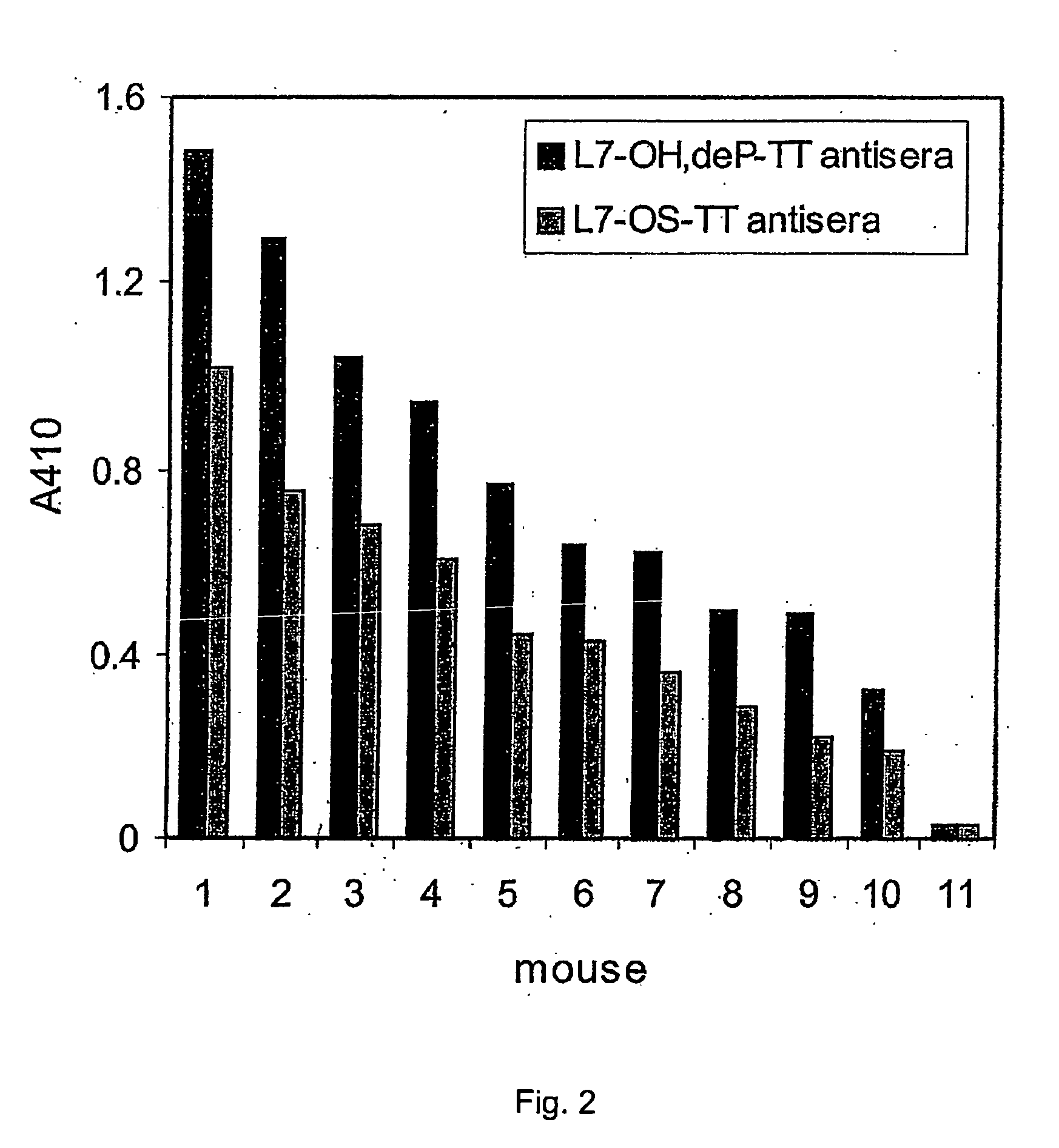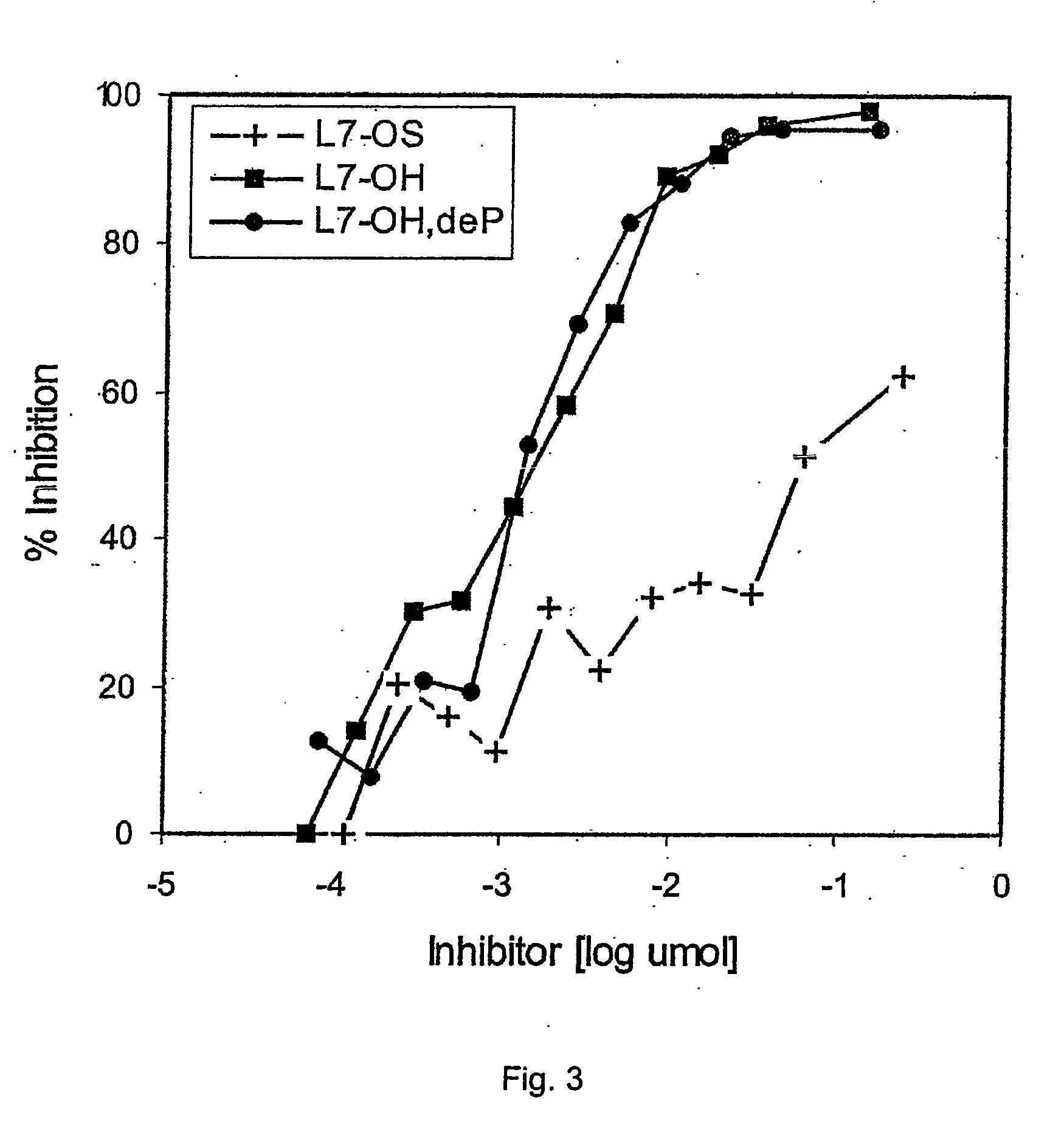Synthesis of lipopolysaccharide-protein conjugate vaccines via the lipid a region following removal of the glycosidic phosphate residue
a technology of lipopolysaccharide and conjugate vaccine, which is applied in the direction of peptides, antibody medical ingredients, peptide sources, etc., can solve the problems of conjugated capsular polysaccharides, poor immunogenicity, and inapplicability of technology to some important bacterial pathogens
- Summary
- Abstract
- Description
- Claims
- Application Information
AI Technical Summary
Benefits of technology
Problems solved by technology
Method used
Image
Examples
example 1
Production, Characterisation and Performance of a Lipopolysaccharide-Based Meningococcal Vaccine Utilizing Neisseria Meningitidis Strain L7 Conjugated to Tetanus Toxoid (TT) Via Alkaline Phosphatase Technology
[0050] According to the invention, to avoid the toxicity of the LOS, the toxic lipid A moiety was removed by mild acid hydrolysis and subsequently the innocuous oligosaccharides were conjugated by different methods to protein carriers through their terminal 2-keto-3-deoxyoctulosonic acid (KDO) residues (9,13,30). Although L10-conjugates were able to induce in mice oligosaccharide antibodies which were bactericidal (9,13), conjugates made with oligosaccharides associated with groups B and C meningococci in comparison produced antisera with sub-optimal bactericidal activity (13,30). This was particularly noticeable in the case of the L3 and L7 immunotypes, which are unfortunately the most prevalent among groups B and C meningococcal isolates (32). Both the L3 and L7 immunotypes ...
example 2
Production, Characterisation and Performance of a Lipopolysaccharide-Based Meningococcal Vaccine Utilising Neisseria Meningitidis Strain L3 galE Conjugated to CRM197 Via Alkaline Phosphatase Technology
Materials and Methods
[0079] In this example, the galE mutant of Neisseria meningitidis strain H44 / 76 (L3 immunotype) was initially grown overnight at 37° C. in 10% CO2 on 50% Todd-Hewitt 50% Columbia (THC) agar plates. Starter plates were used to heavily inoculate starter cultures (1 L) and grown in (THC) broth at 37° C. for 18 h. Starter cultures were used to inoculate the 28 L fermenter with the same media, and grown as for starter cultures. After overnight growth (17 h at 37° C.), the culture was killed by addition of phenol (1%), and chilled to 15° C. and the bacteria were harvested by centrifugation (13, for 20 min) (Wakarchuk, W., et al., 1996. J. Biol. Chem. 271: 19166-19173). Generally yields were 100 g biomass (wet wt.).
[0080] The crude LPS was extracted from the bacterial ...
example 3
Production, Characterisation and Performance of a Lipopolysaccharide-Based Haemophilus Influenzae Vaccine Utilising Haemophilus Influenzae Strain 1003 lic1 lpsA Conjugated to TT Via Alkaline Phosphatase Technology
Introduction
[0098]Haemophilus influenzae is a major cause of disease worldwide. Six capsular serotypes (“a” to “f”) and an indeterminate number of acapsular (non-typeable) strains of H. influenzae are recognized. Type b capsular strains are associated with invasive diseases, including meningitis and pneumonia, while non-typeable H. influenzae (NTHi) is a primary cause of otitis media in children and respiratory tract infections in adults. Otitis media is a common childhood disease which accounts for the highest frequency of paediatric visits in the United States (Stool et al., Pediatr. Infect. Dis. Suppl., 8: S11-S14, 1989).
[0099] The development of a vaccine for NTHi diseases has proved difficult because of a lack of understanding of the antigens that confer protective ...
PUM
| Property | Measurement | Unit |
|---|---|---|
| Molar density | aaaaa | aaaaa |
| Molar density | aaaaa | aaaaa |
| Fraction | aaaaa | aaaaa |
Abstract
Description
Claims
Application Information
 Login to View More
Login to View More - R&D
- Intellectual Property
- Life Sciences
- Materials
- Tech Scout
- Unparalleled Data Quality
- Higher Quality Content
- 60% Fewer Hallucinations
Browse by: Latest US Patents, China's latest patents, Technical Efficacy Thesaurus, Application Domain, Technology Topic, Popular Technical Reports.
© 2025 PatSnap. All rights reserved.Legal|Privacy policy|Modern Slavery Act Transparency Statement|Sitemap|About US| Contact US: help@patsnap.com



